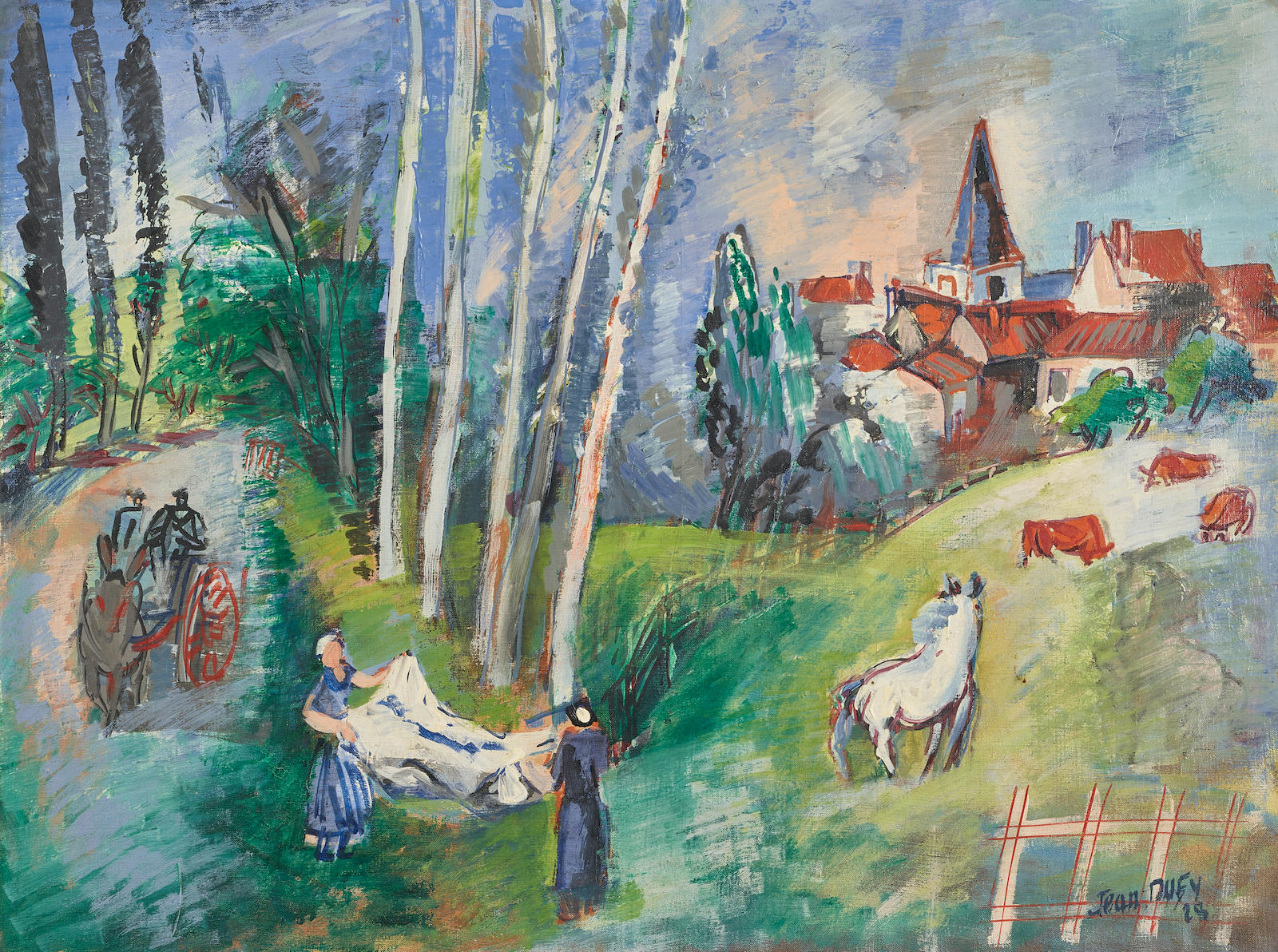Jean Dufy (French, 1888–1964)
Jean Dufy (French, 1888–1964) was born in Le Havre in 1888, the seventh of 11 children, including well-known artist Raoul Dufy. His father was an accountant in a metallurgy company, as well as a talented amateur musician.
Full Artist Bio
Jean Dufy (French, 1888–1964) was born in Le Havre in 1888, the seventh of 11 children, including well-known artist Raoul Dufy. His father was an accountant in a metallurgy company, as well as a talented amateur musician. In 1912, Dufy moved to Paris, and grew acquainted with André Derain, Georges Braque, Pablo Picasso, and Guillaume Apollinaire. In 1916, after briefly working with his brother for the textile painting studio of the famous Bianchini-Férier company in Lyon, Dufy began a 30-year career of decorating porcelain for Théodore Haviland in Limoges. In 1920, Dufy settled in Montmartre. Amid this intense artistic scene, the artist developed his skills as a colorist. He also met some of the great musicians of the day, and his work increasingly reflected the marriage of art and music. He created scenes of musicians and orchestras, with his figures often taking on the shapes and placements of musical notes. He was also inspired by circuses and clowns. In the following years, Dufy’s return visits to Le Havre inspired many colorful landscapes. For the 1937 World’s Fair, the general manager of the Paris electricity distribution company commissioned Dufy and his brother to decorate the electricity pavilion. Between 1950 and 1960, Dufy traveled widely in Europe and North Africa. However, Paris remained his favorite subject, and he continued to draw the parks, the Eiffel Tower, street life, and the Seine. Dufy passed away on May 12, 1964, in La Boissière in the village of Boussay. Today, Dufy’s works can be found in the collections of the most prestigious museums in Europe and the United States, including the Musée national d’Art moderne, Centre Pompidou in Paris, the Albertina Museum in Vienna, the Art Institute of Chicago, and the MoMA in New York.
